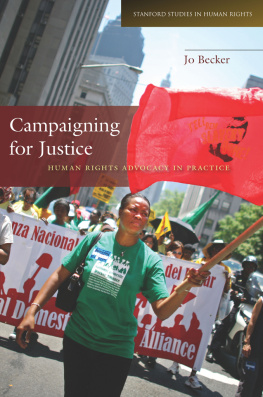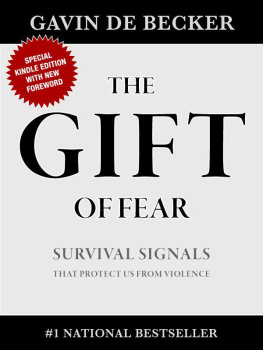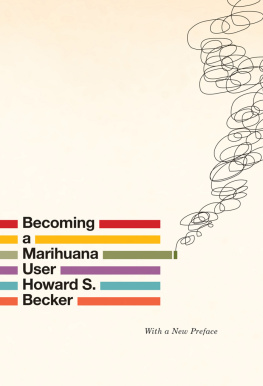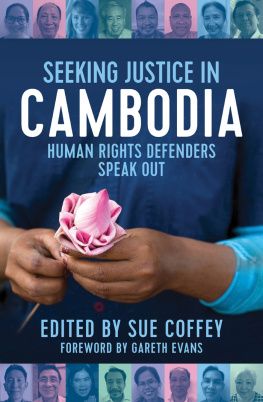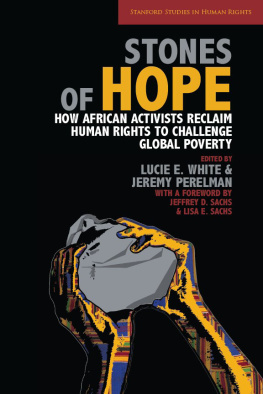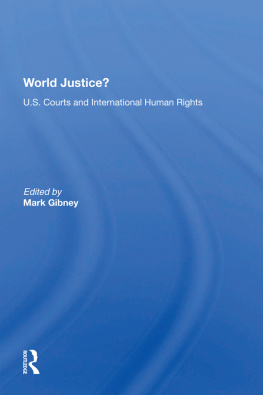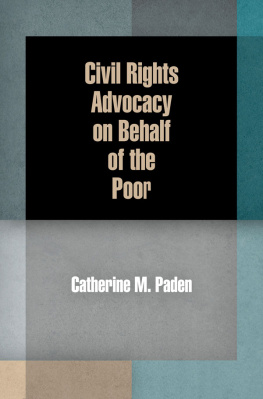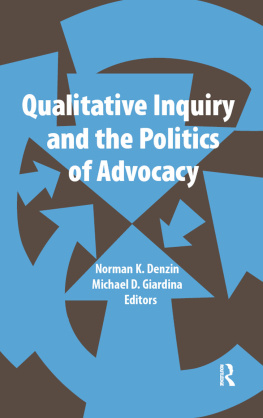Becker - Campaigning for justice: human rights advocacy in practice
Here you can read online Becker - Campaigning for justice: human rights advocacy in practice full text of the book (entire story) in english for free. Download pdf and epub, get meaning, cover and reviews about this ebook. City: Stanford, California, year: 2013, publisher: Stanford University Press, genre: Politics. Description of the work, (preface) as well as reviews are available. Best literature library LitArk.com created for fans of good reading and offers a wide selection of genres:
Romance novel
Science fiction
Adventure
Detective
Science
History
Home and family
Prose
Art
Politics
Computer
Non-fiction
Religion
Business
Children
Humor
Choose a favorite category and find really read worthwhile books. Enjoy immersion in the world of imagination, feel the emotions of the characters or learn something new for yourself, make an fascinating discovery.
Campaigning for justice: human rights advocacy in practice: summary, description and annotation
We offer to read an annotation, description, summary or preface (depends on what the author of the book "Campaigning for justice: human rights advocacy in practice" wrote himself). If you haven't found the necessary information about the book — write in the comments, we will try to find it.
Campaigning for justice: human rights advocacy in practice — read online for free the complete book (whole text) full work
Below is the text of the book, divided by pages. System saving the place of the last page read, allows you to conveniently read the book "Campaigning for justice: human rights advocacy in practice" online for free, without having to search again every time where you left off. Put a bookmark, and you can go to the page where you finished reading at any time.
Font size:
Interval:
Bookmark:
Stanford Studies in Human Rights
Campaigning for Justice
Human Rights Advocacy in Practice
Jo Becker
Stanford University Press
Stanford, California
Stanford University Press
Stanford, California
2013 by the Board of Trustees of the Leland Stanford Junior University.
All rights reserved.
No part of this book may be reproduced or transmitted in any form or by any means, electronic or mechanical, including photocopying and recording, or in any information storage or retrieval system without the prior written permission of Stanford University Press.
Printed in the United States of America on acid-free, archival-quality paper.
Library of Congress Cataloging-in-Publication Data
Becker, Jo, author.
Campaigning for justice : human rights advocacy in practice / Jo Becker.
pages cm. (Stanford studies in human rights)
Includes bibliographical references and index.
ISBN 978-0-8047-7450-5 (cloth : alk. paper)
ISBN 978-0-8047-7451-2 (pbk. : alk. paper)
ISBN 978-0-8047-8438-2 (e-book)
1. Human rights advocacyCase studies. 2. Human rightsCase studies. I. Title. II. Series: Stanford studies in human rights.
JC571.B425 2012
323dc23
2012010567
Contents
Foreword
Campaigning for justice: Human Rights advocacy in practice is a much-needed antidote to the perceived gap in the literature between human rights theory and the practice of human rights advocacy. The book demonstrates that ideas about human rights and the contemporary world are deeply connected with forms of practice and institutional shifts within international and transnational communities and that case studies of individual actors within these broader movements are a singular source of experiential knowledge and insight. Jo Becker is a longtime staffmember at Human Rights Watch with years of global experience in human rights advocacy, reporting, and monitoring. She draws from this considerable experience on the frontlines of international human rights practice in a wide-ranging study of organized advocacy campaigns, developments in the UN monitoring system, the politics of accountability within international criminal law, and the role of new forms of media in creating a curious grapevine of information about human rights violations that transcendsand transgressesthe boundaries of nation-states. Her book is meant to be used in multiple ways: as a source of new information about contemporary human rights practices; as a guide to the lives and experiences of people caught up in ongoing struggles for human rights and accountability; and as a deeply felt reflection on the pitfalls and potential ways forward for activists in the midst of conflict, resistance, and movements for social justice.
Her book is organized around profiles of human rights advocates and is structured in such a way that the lessons learned from these diverse experiences can be used by others who wish to participate in future campaigns. The writing and presentation are accessible, and the book speaks to a growing constituency that desires more grounded perspectives on human rights, both within academia and beyond. The book is not a simple how-to manual; rather, it is an informed overview of current human rights practices anchored in illustrative lives and institutions. What is so indispensable about Campaigning for Justice is the way Becker distills her many years at the forefront of highly visible human rights campaigns and interviews with dozens of other experienced activists to identify the most promising areas of human rights advocacy for the future. Despite what critics might say about the politics of human rights and the strategic manipulation of international law by particular nation-states, Beckers book paints an optimistic picture of the role of human rights and the people who have dedicated their lives to a more just world. As she puts it, the human rights movement is full of... examples of innovative partnerships, skillful messaging, strategic interventions, and persistent organizing, and her book serves as a signpost for those who would carry on the fight for human rights with understanding and creativity.
Mark Goodale
Series Editor
Stanford Studies in Human Rights
Introduction
Advocates within the Human Rights movement have had remarkable success in establishing new international laws to address egregious abuses, securing concrete changes in government human rights policies and practices, and transforming the terms of public debate in order to bring new human rights issues squarely onto the global agenda. Yet too often, the strategies that human rights advocates have employed to achieve these goals are not broadly shared or known. While the human rights movement has grown exponentially over the past few decades, the practitioners who are on the front lines of advocacy rarely take time to document their efforts or analyze for a broader audience why their tactics have succeeded or failed.
This book explores the strategies behind some of the most innovative human rights campaigns and exciting victories of recent years. It delves into local, regional, and international advocacy efforts to discover how advocates were able to address seemingly intractable abuses and secure concrete advances in human rights. For example, how did families in Libya organize to demand accountability for a prison massacre despite intimidation by security forces and laws prohibiting human rights activity? How did a small group of advocates mount a global campaign to win an international treaty banning the use of child soldiers? How did African and international groups ensure that former Liberian president Charles Taylor stood trial for alleged war crimes? How were advocates able to use YouTube, Twitter, Facebook, Internet blogs, satellite feeds, and an online television station to bring global attention to Tibet during the 2008 Beijing Olympics?
The human rights movement is full of such amazing examples of innovative partnerships, skillful messaging, strategic interventions, and persistent organizing that have highlighted new issues, empowered victims, changed attitudes, and resulted in new policies and practices. The eleven case studies featured in this book are but a sample of the wealth the movement has to offer. Drawing on interviews with dozens of experienced human rights advocates, the examples selected for this volume focus on four strengths of the human rights movement: the development of new international legal standards; the use of the United Nations system and its mechanisms on behalf of human rights; efforts to ensure accountability for human rights abuses and bring perpetrators to justice; and the emergence of broad new alliances and the use of new technology.
Some of the human rights movements most significant recent victories have been the adoption of new international legal standards, including treaties to abolish anti-personnel mines (1998), to establish the International Criminal Court (1999), to prohibit the use of child soldiers in armed conflict (2000), to protect the rights of persons with disabilities (2006), and to abolish the use of cluster munitions (2008). These campaigns have established new models of organizing that are increasingly accepted as the norm. For example, the International Campaign to Ban Landmines created a new model of partnership between non-governmental organizations (NGOs) and like-minded governments and established a precedent for treaty negotiations outside of the traditional venue of the United Nations. The successful effort to achieve the 2006 Convention on the Rights of Persons with Disabilities was marked by unparalleled organizing and involvement by persons with disabilities. Their insistence on nothing about us without us ensured their presence at the table and active involvement in the negotiations. Many of these new treaties have been ratified at astonishing rates, winning broad acceptance in just a few years, thanks in large part to persistent pressure from the campaigns that worked for their adoption.
Next pageFont size:
Interval:
Bookmark:
Similar books «Campaigning for justice: human rights advocacy in practice»
Look at similar books to Campaigning for justice: human rights advocacy in practice. We have selected literature similar in name and meaning in the hope of providing readers with more options to find new, interesting, not yet read works.
Discussion, reviews of the book Campaigning for justice: human rights advocacy in practice and just readers' own opinions. Leave your comments, write what you think about the work, its meaning or the main characters. Specify what exactly you liked and what you didn't like, and why you think so.

